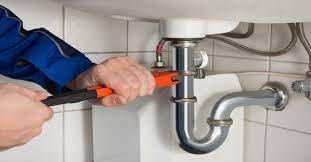Cables are indispensable in various industries, especially when strength, durability, and flexibility are non-negotiable. Choosing the right wirerope for your project is paramount, as it directly impacts safety, efficiency, and overall project success. In this comprehensive guide, you will delve into critical considerations and insights to help you make an informed decision.
A Closer Look
These ropes are crafted from multiple strands of metal wire twisted together, forming a helix pattern. This design provides wired cables with exceptional strength and flexibility, making them ideal for lifting, rigging, and various materials handling applications.
Types of Cables
Not all cables are created equal, and understanding the different types is crucial for selecting the right one for your project.
1. Galvanised Wire rope: Known for its corrosion resistance, galvanised cable is coated with a layer of zinc. This makes it suitable for outdoor use, particularly in environments where exposure to the elements is a concern.
2. Stainless Steel Wire Rope: Renowned for its exceptional strength and resistance to corrosion, stainless steel is a popular choice in industries requiring durability and reliability. It excels in applications where exposure to harsh chemicals or extreme temperatures is a factor.
3. Vinyl-Coated Wire Rope: For projects where abrasion and wear are significant considerations, vinyl-coated wire rope provides an added layer of protection. The coating not only enhances durability but also offers a degree of flexibility.
4. Plastic-Coated: Combining the strength of cables with the benefits of a plastic coating, this type is often chosen for applications where electrical conductivity must be minimised or a non-metallic appearance is preferred.
Factors Influencing Selection
1. Load Capacity: Determining the maximum load your wire rope must bear is the first step. It’s crucial to choose a cable with a load capacity well above the maximum load of your project to ensure safety and longevity. This strategic approach safeguards against unexpected stresses and ensures the rope operates within optimal performance range.
2. Environmental Conditions: Consider the environment in which your construction rope will be used. Factors such as exposure to moisture, chemicals, or extreme temperatures can impact the material and coating you choose. Tailoring your selection to the specific conditions ensures the rope’s resilience and longevity in its operational environment.
3. Flexibility Requirements: Different projects demand varying degrees of wired cable flexibility. Assess your project’s needs and choose one that provides the required level of flexibility without compromising strength. This tailored approach ensures optimal performance, meeting the specific demands of your project while maintaining the rope’s structural integrity.
4. Abrasion Resistance: If your construction rope will be subjected to frequent rubbing against surfaces, selecting a rope with enhanced abrasion resistance, such as vinyl-coated cable, is advisable.
5. Corrosion Resistance: In corrosive environments, choosing a rope with excellent corrosion resistance, like stainless steel or galvanised cable, is essential for long-term reliability.
Proper Maintenance
Selecting the right wire rope is only part of the equation; proper maintenance is equally crucial to ensure longevity and safety. Regular inspections, cleaning, and lubrication are fundamental practices to identify and address potential issues before they escalate. This proactive approach not only enhances the cable’s lifespan but also minimises the risk of unexpected failures, contributing significantly to the overall reliability of your project and the safety of those involved in its execution.
Conclusion
In conclusion, navigating the myriad choices in wired cables demands careful consideration of material, coating, load capacity, and environmental conditions. By understanding the specific requirements of your project and the characteristics of each wirerope type, you can make an informed decision that not only ensures safety but also contributes to your project’s overall efficiency and success. Remember, the cable you choose is not just a component; it’s a lifeline, and choosing wisely is a commitment to the safety and success of your endeavours.



